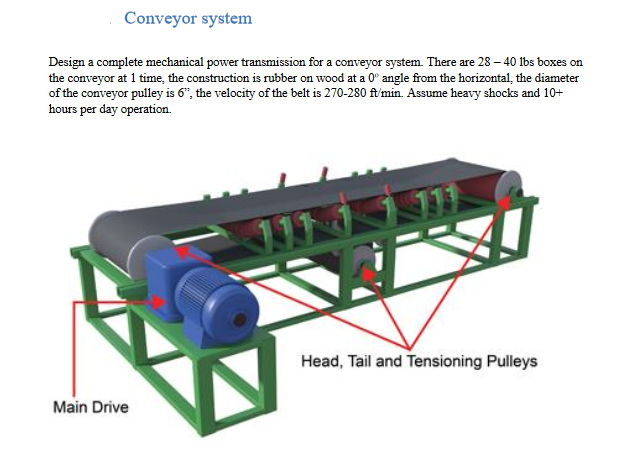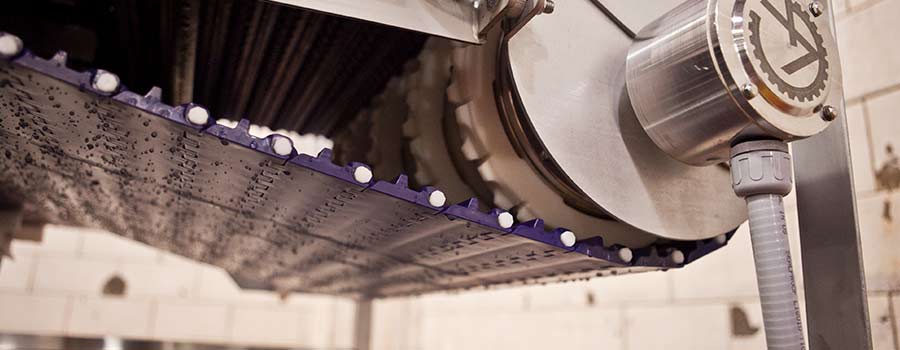Table Of Content

The following material concentrates on belt conveying systems, which are the most prevalent, in order to limit the topic of conveying systems. Working of a Conveyor SystemConveyor systems are part of production processes. It is important to understand how everything fits together when discussing the workings of these systems. Enhanced Profitability – Elimination of carryback in the belt system minimizes cleanup and reduces maintenance cost too where ultimately it results in enhanced profitability. View our conveyorproject gallery for even more examples of conveyor equipment and systems.
Which type of motors are used in conveyors?
Conveyor belts designed for the mining industry should have excellent resistance to impact, tearing, and puncturing. They should also be flame-resistant and capable of handling steep inclines or declines. When designing conveyor systems, it’s important to consider maintenance, cleaning, and repair requirements. This is essential to ensure that maintenance tasks can be carried out quickly and efficiently, minimising downtime and maximising productivity. These conveyors accomplish the most basic material handling task –moving products quickly and efficiently from one point in a facility to another.
Keep Your Promise to Deliver on Time.
Zuken’s tools provide robust simulation capabilities that are crucial for designing conveyor systems. Engineers can use E3.series to test and validate their designs before implementation, identifying potential issues and optimizing performance. This leads to efficient and reliable conveyor system design tailored to specific operational needs. Engineers must address a variety of considerations, including the optimization of material flow, energy efficiency, and system reliability. By implementing these best practices, manufacturers can ensure the long-term performance, reliability, and efficiency of their conveyor belt system, leading to maximized production output and reduced operational costs.
Conveyor Type
Inverted ConveyorsInverted conveyors are used for power and free conveyance. Monorail ConveyorsMonorail conveyors use the space above production areas and have power supplied by signal lines from conductor lines inside the mounted rails. In order to get out of the way, the carriers first go upward before descending to the level of output. To make sure our partners receive the right solution, we’re equipment agnostic and believe teamwork is vital throughout the partnership. The important driving force for us is working alongside our customers as an active partner and providing them with the most up-to-date conveyor system and material handling equipment.
In this way, IoT is bestowing conveyors with newfound transparency and operation control. As technology continues to evolve, the conveyor industry is adopting new paradigms in its conveyor system design. This is the important mining component that will relentlessly be used for the transportation of mining materials.
Conveyor Belt System Design: Principles and Applications
When you need to connect two conveyors at different heights, a continuous vertical conveyor acts as a lift to bridge the gap. The difference between a fixed speed and variable speed motor is the ability to easily adjust the speed of the conveyor. Before covering technology, Rob spent 10 years as publisher and owner of Chile Pepper Magazine, a national consumer food publication. Prior to Design News, he worked as a senior editor for Electronic News and Ecommerce Business. He has contributed to a wide range of industrial technology publications, including Automation World, Supply Chain Management Review, and Logistics Management. Conveyors that are modular help achieve the flexibility needed for diverse applications.
Pallet Conveyors
There is a temptation to convey at the high end of the speed range at the maximum angle of conveying ability because a fast belt can be narrower, a steep belt shorter, and therefore the capital cost should be lower. Investing in a high-quality conveyor belt is essential to streamlining the manufacturing process. It is critical to ensure your production line operates as efficiently as possible. When it comes to choosing a conveyor belt for your business, it is important to consider the quality of the products you are buying.

A conveyor system may use a belt, wheels, rollers, or a chain to transport objects. Adhering to established conveyor design standards and best practices is essential for creating conveyor belt systems that are safe, efficient, and reliable. Predictive analytics and artificial intelligence can revolutionize conveyor belt design by analyzing vast amounts of data and optimizing system performance in real-time.
This is a somewhat newer consideration in custom designing aggregate processing plants and material handling solutions. It’s true that a variety of industry trends—a focus on better safety, for one—are driving the adoption of conveyors in places where truck hauling used to be common. To that end, this blog provides five conveyor system design considerations to help maximize material handling efficiency, boost productivity and throughput and reduce costs. By automating the movement of production lines, they ensure tasks complete quickly and accurately. This helps reduce manual labor costs and free up employees’ time to focus on other tasks such as quality control or customer service.
The unit contains a counter bearing that keeps the parts moving efficiently. This unit also allows for the belt to move in reverse and manage the repeated adjustments in direction for some systems. Belt ConveyorsThe most popular and straightforward type of conveyor is the belt conveyor.
Furthermore, scalability and customization are critical in meeting the diverse needs of different industries. Engineers must design systems that can be easily adapted or expanded, considering future growth or changes in production needs. This requires modular designs and flexible control software to accommodate new functionalities or integrate with other systems. Also, these systems are integrated with intemperate equipment and technology. It provides the options of enhanced performance, good steadfastness and durability, removal of overloading, assembling, and distribution.
The design of conveyor belts for automotive applications must consider factors such as high-speed operation, heavy loads, and precise positioning. Conveyor belts with high tensile strength, resistant to oil and grease, and capable of handling heavy loads are essential for efficient automotive production. In this article, we delve into the importance of a well-designed conveyor belt system and how it can revolutionize manufacturing performance.
In any instance that has sanitary requirements, exposure to harsh chemicals, or in washdown environments, stainless steel is appropriate. Stainless steel is chemical resistant, easy to clean, and is another good option for food processing, pharmaceutical, or hygiene industries. Choosing the proper conveyor system design for your business will keep your employees safe and efficient, and create standards that make logistics and forecasting a whole lot easier. Conveyor systems are designed for many different purposes and applications, so each one looks a little bit different.
The feeding conveyor belt especially designed for the Hexact stationary screen WMW - Waste Management World
The feeding conveyor belt especially designed for the Hexact stationary screen WMW.
Posted: Thu, 16 Nov 2023 08:00:00 GMT [source]
Conveyor systems save time when transporting items from one location to another. As they can be inclined to span multiple levels, they make it simpler to move items up and down floors, a task that, when performed manually by humans, causes physical strain. Inclined belts can automatically unload material, eliminating the need for someone to be on the opposite end to receive pieces. The most common conveyor system designs use a rotor to power the drive pulley and belt.
Cost-effectiveness metrics measure the efficiency of the conveyor system in relation to the costs incurred. This includes factors such as energy consumption, maintenance costs, and labor requirements. Maximizing cost-effectiveness ensures that the conveyor belt design delivers optimal performance while minimizing operating expenses.

No comments:
Post a Comment